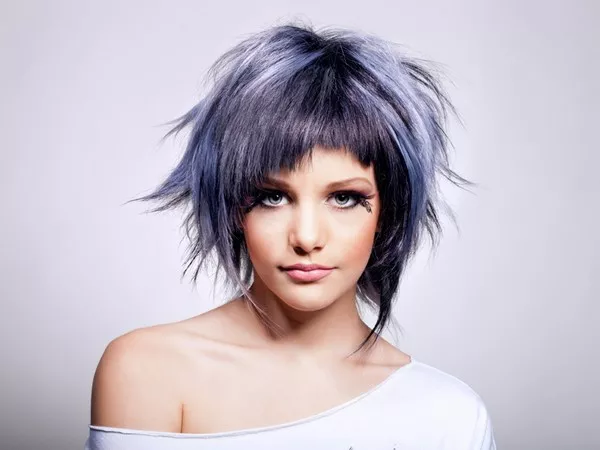Choosing the right hair color technique can be a daunting task, especially with the myriad of options available. Balayage and ombre are two popular hair coloring techniques that have gained significant traction in the beauty industry. While both techniques involve creating dimension and depth in hair color, they offer distinct results and cater to different preferences and styles. Understanding the differences between balayage and ombre can help you make an informed decision about which technique best suits your desired look and personal aesthetic.
I. Balayage: Effortless and Natural Highlights
Balayage, a French word meaning “to sweep” or “to paint,” is a hair coloring technique that involves hand-painting highlights onto the hair to create a natural, sun-kissed look. The colorist strategically places lighter tones on specific sections of the hair, focusing on the mid-lengths and ends to mimic the natural effects of the sun. Balayage allows for a seamless blend of color, resulting in soft, gradual transitions between shades. This technique is ideal for individuals seeking a low-maintenance hair color that grows out gracefully, with minimal visible regrowth lines.
II. Ombre: Bold and Striking Color Gradation
Ombre, a French term meaning “shaded,” is a hair coloring technique that involves blending one color hue to another, typically from darker roots to lighter ends. Ombre creates a distinct contrast between the roots and the tips, resulting in a bold, striking look with a noticeable transition between the two colors. While traditional ombre often features a darker shade at the roots that gradually transitions to a lighter tone at the ends, variations of the technique now include creative color combinations and unconventional shades, allowing for a personalized and edgy aesthetic.
III. Choosing Between Balayage and Ombre: Factors to Consider
When deciding between balayage and ombre, several factors can influence your choice, including your hair type, desired maintenance level, and personal style preferences. Consider the following aspects to determine which technique aligns best with your hair goals and lifestyle:
Hair Texture and Length: Balayage works well with various hair textures and lengths, creating natural-looking dimension and depth. Ombre, on the other hand, tends to be more visible on longer hair, allowing for a more dramatic color gradient from roots to tips.
Maintenance and Regrowth: Balayage offers a softer regrowth line, requiring less frequent touch-ups compared to ombre, which may require more regular salon visits to maintain the defined color contrast between the roots and ends.
Color Preference and Style: Consider your desired color intensity and overall style aesthetic. Balayage lends itself to a more subtle, sun-kissed appearance, while ombre provides a bolder, more statement-making look with a noticeable color transition.
Personal Preference for Gradation: Determine whether you prefer a seamless, natural-looking color blend (balayage) or a distinct, noticeable gradient from roots to ends (ombre) to ensure your chosen technique reflects your preferred hair color aesthetic.
Deciding between balayage and ombre involves understanding your hair goals, preferences, and maintenance expectations, allowing you to choose the technique that best complements your personal style and enhances your overall look.
IV. FAQs about Balayage and Ombre:
1. Can I achieve balayage or ombre on dark hair?
Both balayage and ombre techniques can be adapted for dark hair, with the colorist customizing the shades to create a seamless, natural look or a bold contrast, depending on the desired outcome and the client’s preferences.
2. How often do I need touch-ups for balayage and ombre?
Balayage generally requires touch-ups every three to four months, depending on the individual’s hair growth and color preferences. Ombre may require more frequent touch-ups, typically every six to eight weeks, to maintain the defined color gradient and prevent harsh lines between the root and tip colors.
3. Can I transition from balayage to ombre or vice versa?
Transitioning from balayage to ombre or vice versa is possible with the help of an experienced colorist who can adjust the placement and intensity of the colors to create the desired effect and ensure a smooth transition between the two techniques.

